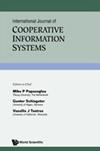Research on Data Generation Based on the Combination of Growing-Pruning GAN and Intelligent Parameter Optimization
IF 0.8
4区 计算机科学
Q4 COMPUTER SCIENCE, INFORMATION SYSTEMS
International Journal of Cooperative Information Systems
Pub Date : 2023-09-29
DOI:10.1142/s0218843023500235
引用次数: 0
Abstract
The amount of voltage fault data collection is limited to signal acquisition instruments and simulation software. Generative adversarial networks (GAN) have been successfully applied to the data generation tasks. However, there is no theoretical basis for the selection of the network structure and parameters of generators and discriminators in these GANs. It is difficult to achieve the optimal selection basically by experience or repeated attempts, resulting in high cost and time-consuming deployment of GAN computing in practical applications. The existing methods of neural network optimization are mainly used to compress and accelerate the deep neural network in classification tasks. Due to different goals and training processes, they cannot be directly applied to the data generation task of GAN. In the three-generation scenario, the hidden layer filter nodes of the initial GAN generator and discriminator are growing firstly, then the GAN parameters after the structure adjustment are optimized by particle swarm optimization (PSO), and then the node sensitivity is analyzed. The nodes with small contribution to the output are pruned, and then the GAN parameters after the structure adjustment are optimized using PSO algorithm to obtain the GAN with optimal structure and parameters (GP-PSO-GAN). The results show that GP-PSO-GAN has good performance. For example, the simulation results of generating unidirectional fault data show that the generated error of GP-PSO-GAN is reduced by 70.4% and 15.2% compared with parameters optimization only based on PSO (PSO-GAN) and pruning- PSO-GAN (P-PSO-GAN), respectively. The convergence curve shows that GP-PSO-GAN has good convergence.基于生长-修剪GAN与智能参数优化相结合的数据生成研究
电压故障数据的采集量受到信号采集仪器和仿真软件的限制。生成对抗网络(GAN)已成功地应用于数据生成任务。然而,这些gan的网络结构和产生器和鉴别器参数的选择尚无理论依据。GAN计算在实际应用中的部署成本高、耗时长,难以通过经验或反复尝试实现最优选择。现有的神经网络优化方法主要用于深度神经网络在分类任务中的压缩和加速。由于目标和训练过程不同,它们不能直接应用于GAN的数据生成任务。在三代方案中,首先对初始GAN发生器和鉴别器的隐层滤波节点进行生长,然后利用粒子群算法对结构调整后的GAN参数进行优化,最后对节点的灵敏度进行分析。对输出贡献较小的节点进行剪枝,然后利用粒子群算法对结构调整后的GAN参数进行优化,得到结构和参数最优的GAN (GP-PSO-GAN)。结果表明,GP-PSO-GAN具有良好的性能。例如,生成单向故障数据的仿真结果表明,与仅基于PSO (PSO- gan)和基于剪枝-PSO- gan (P-PSO-GAN)参数优化相比,GP-PSO-GAN的生成误差分别降低了70.4%和15.2%。收敛曲线表明GP-PSO-GAN具有较好的收敛性。
本文章由计算机程序翻译,如有差异,请以英文原文为准。
求助全文
约1分钟内获得全文
求助全文
来源期刊

International Journal of Cooperative Information Systems
工程技术-计算机:信息系统
CiteScore
2.30
自引率
0.00%
发文量
8
审稿时长
>12 weeks
期刊介绍:
The paradigm for the next generation of information systems (ISs) will involve large numbers of ISs distributed over large, complex computer/communication networks. Such ISs will manage or have access to large amounts of information and computing services and will interoperate as required. These support individual or collaborative human work. Communication among component systems will be done using protocols that range from conventional ones to those based on distributed AI. We call such next generation ISs Cooperative Information Systems (CIS).
The International Journal of Cooperative Information Systems (IJCIS) addresses the intricacies of cooperative work in the framework of distributed interoperable information systems. It provides a forum for the presentation and dissemination of research covering all aspects of CIS design, requirements, functionality, implementation, deployment, and evolution.
 求助内容:
求助内容: 应助结果提醒方式:
应助结果提醒方式:


